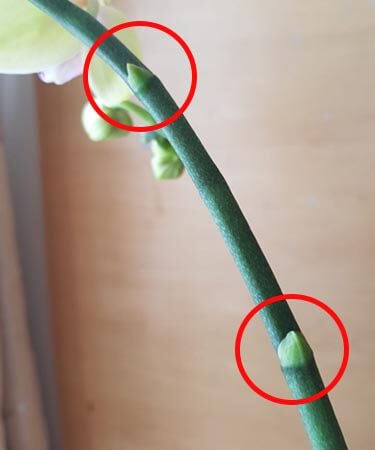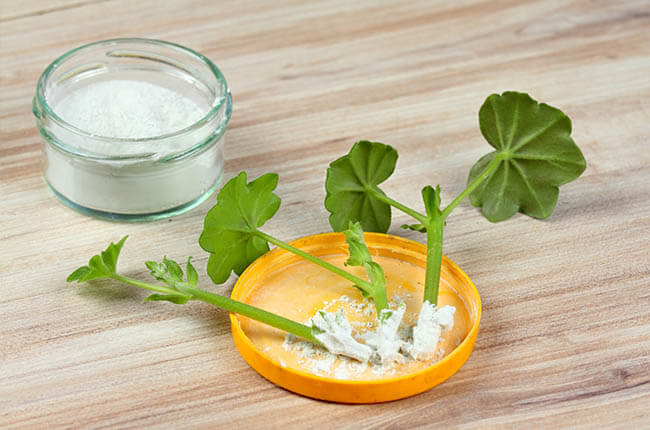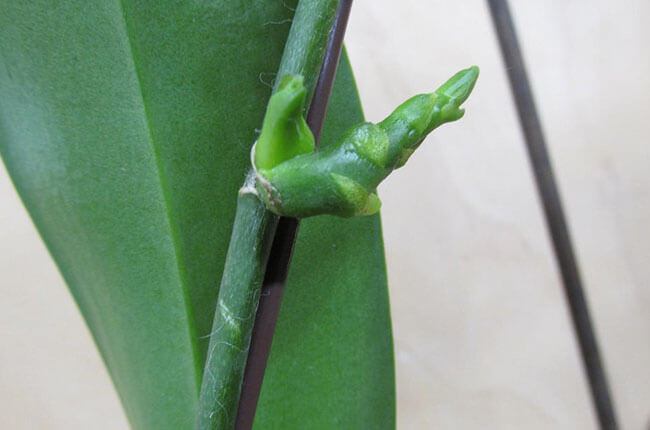Some people want to apply keiki paste on a rootless keiki to make it grow roots, while others want to use rooting hormone to propagate shrub cuttings.
Keiki paste is often confused with rooting hormone.
Keiki paste contains the plant hormone cytokinin and is used to stimulate shoot growth on stems or shrub cuttings, while products with rooting hormone contain the root-promoting hormone, auxin. They are antagonists, as applying one of the hormones would suppress the other.
Keiki Paste
1. What does keiki paste do?
The function of kieki paste is to clone a new plant. It does so by “waking up” the meristem tissues at dormant growth nodes to stimulate cell growth, to form a new stem, a flower, or in the case of orchids a new baby orchid (i.e. keiki).
It is a lanolin base or an ointment infused with a chemical called 6-Benzylaminopurine that mimics the plant hormone cytokinin. (Take a look at this article to learn how to make Keiki paste yourself)
Keiki paste usually comes in a small bottle. The most famous brand is Southside but it is relatively more expensive than the other brand.
2. Where to apply keiki paste?
Keiki paste should be applied to growth nodes on stems.
For orchids, growth nodes are located on the flower stems. Keiki paste only works when applied to the growth nodes that have not yet flowered.
Keiki paste can also be applied to other plants, such as Monstera, Pathos, Begonia, to stimulate shoot growth. Apply it to the buds in an area that is young and green, i.e. not woody, to encourage shoot growth.
Pro tip: Focus on one node at a time so that the plant can focus its resources on growing that one spot. Applying keiki paste on too many spots may be counter-productive. Also, start with the top nodes and work its way down.
Take a look at this article if you want to make an orchid keiki to grow roots.

3. Can you use keiki paste on cuttings?
Keiki paste (cytokinin) cannot be used on cuttings to grow roots. It is applied on growth nodes to signal the plant to direct its energy on shoot formation as it suppresses root growth at the same time.
4. Can you clone orchids without keiki paste?
Certainly, you can clone orchids or produce keikis by just cutting spent flower stems and putting them in a covered glass with moist moss wrapped around the growth nodes. Some people have also successfully produced keikis from cut stems on moist soil or peat.
New shoots can develop as long as there is water being drawn up the stem by capillary action and there is light for photosynthesis.
The science behind the propagation by stem cuttings is complex, associated with growth inhibitors, hormones and chemical reactions. But it is generally believed that when a plant is under stress for survival and is no longer under growth inhibitors from the mother plant, it would try to use the meristems to clone itself to preserve the genome.
However, this method is not a sure way to make keikis and can fail especially due to fungal attack, and also due to the fact that the stem cuttings are detached from the mother plant.
The better way to produce keiki is still applying keiki paste on the growth nodes on uncut stems that are still attached to the mother plant.
Rooting Hormone
1. When to use rooting hormone?
Rooting hormone is for shrub cuttings to grow roots for the purpose of propagation and it may lower the risk of cuttings turning black to rot. But, it is best to let your cuttings callus first before applying rooting hormone and putting them in soil to propagate.
Root-promoting products, with the rooting hormone auxins, are applied to the roots (in the case of stimulating a sick plant to grow more roots) or applied to the lower end of shrub cuttings (in the case of propagation to make the cuttings grow roots).

2. Can I propagate keikis using rooting hormone?
You cannot use rooting hormone to propagate a keiki, which is a new plant that branches off a growth node on a stem.
Rooting hormone, on the other hand, suppresses shoot growth as it signals the plant to direct its energy toward root formation.
3. Types of rooting hormone
There are two types of root-promoting products: synthetic rooting hormones in the form of liquid, powder, dips, gels (e.g. DynaGro K-L-N), and natural rooting hormone (auxin) extracted from seaweed or kelp (e.g. KelpMax, MaxiCrop, Bloom City).
Some of these products (e.g. those in liquid form) are combined with N, P, K fertilizer to strengthen overall plant health, while others (e.g. those in powder, dip, gel form) for propagation are combined with anti-fungal agents to prevent cuttings from molding.
Here are our recommendations for rooting hormones:

- Homex rooting hormone

Synthetic auxins in powder form, great for propagating cuttings
It contains a root-promoting synthetic hormone, indole 3 butyric acid.
The product has varying concentrations of the synthetic hormone ranging from 0.1% (for green stems with most plants) to 0.8% (for hard, fibrous and woody stems).
- Bloom City Clean Kelp

Natural root-promoting plant hormone, auxins, extracted from 7 seaweed and kelp species.
Great for organic vegetable garden special extraction method to preserve the natural enzymes
Conclusion
To sum up, keiki paste and rooting hormone work antagonistically. While keiki paste stimulates shoot growth from growth nodes, it also suppresses root growth. On the other hand, as the rooting hormone promotes root growth, it also suppresses shoot growth.
Related
Why You Should Let Cuttings Callus (Must Read)
How To Make Keiki Paste for Orchids? (DIY Recipe)
Kelp/Seaweed Extract: Magical Rooting Stimulant for Orchids
How to Promote Orchid Root Growth? (Easier than you think)
- Keiki Paste vs Rooting Hormone:What’s the difference? - February 4, 2024
- Top 10 Orchid Fertilizers: A Comprehensive Review (2024) - February 2, 2024
- Top 8 Soil Inoculants For Stronger Plants (2024) - February 1, 2024




